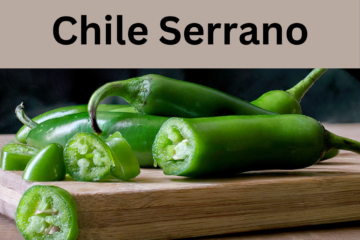What is a canary melon?
Imagine biting into a fruit that’s not only sweet but also feels like a burst of sunshine on your palate. That’s the canary melon for you! This bright yellow fruit, with its smooth skin and juicy flesh, is a lesser-known member of the melon family but is equally delightful. Canary melons, also known as Juan canary melons, are oval-shaped with a vibrant yellow rind, and they boast a pale, almost white interior that’s incredibly juicy and sweet.
Table of Contents
Origin and History
The canary melon is believed to have its roots in the Middle East, where melons have been cultivated for thousands of years. Over time, this melon made its way to various parts of the world, including Asia and Europe. The name “canary” comes from the melon’s bright yellow color, which resembles that of a canary bird. Nowadays, canary melons are cultivated in various areas, including the United States, especially in California and Arizona.
Canary Melon vs. Other Melons
While canary melons might remind you of other melons like honeydew or cantaloupe, they have a distinct flavor profile. Compared to the mild sweetness of honeydew or the musky aroma of cantaloupe, canary melons offer a more intense sweetness and a firmer texture. They also have a longer shelf life, making them a practical choice for those who love to enjoy their melons over time.
Nutritional value of canary melons
Vitamins and Minerals
Canary melons are not just tasty; they’re also packed with essential vitamins and minerals. They’re an excellent source of vitamin C, which is crucial for a healthy immune system, and vitamin A, which supports good vision and skin health. Additionally, canary melons contain important minerals like potassium, which helps regulate blood pressure, and magnesium, which is vital for muscle function.
Caloric Content
For those watching their calorie intake, canary melons are a great choice. A one-cup serving of canary melon provides just about 50 calories, making it a low-calorie snack that’s satisfying and refreshing. Plus, its natural sweetness can help curb cravings for sugary treats.
Antioxidant Properties
Canary melons are rich in antioxidants, particularly vitamin C, which helps fight off free radicals in the body. These antioxidants are essential in protecting your cells from damage, reducing inflammation, and potentially lowering the risk of chronic diseases.
Health Benefits of Canary Melons
Boosts Immunity
Thanks to its high vitamin C content, the canary melon is a powerful ally for your immune system. Regular consumption of this melon can help your body fend off colds and other illnesses, keeping you healthy year-round.
Aids in Digestion
Canary melons are rich in dietary fiber, which is essential for a healthy digestive system. The fiber content helps to promote regular bowel movements, prevent constipation, and maintain a healthy gut environment.
Promotes Hydration
Containing over 90% water, canary melons provide excellent hydration. Eating this fruit is a delicious way to stay hydrated, especially during hot summer months when your body needs extra fluids.
Supports Weight Loss
If you’re looking to shed a few pounds, canary melons can be a helpful addition to your diet. Their high water and fiber content make them filling, which can help you eat less overall. Plus, their natural sweetness can satisfy your sweet tooth without adding many calories.
How to Select and Store Canary Melons
Selecting a Ripe Melon
Choosing a ripe canary melon can make all the difference in your eating experience. Look for a melon with a vibrant yellow color and a slightly waxy feel. It should feel heavy for its size, indicating seriousness. Avoid melons with greenish tones or soft spots, as these can be signs of underripeness or overripeness.
Proper Storage Techniques
Once you’ve picked the perfect melon, proper storage is key to maintaining its freshness. If the melon is not fully ripe, leave it at room temperature for a few days. Once ripe, it’s best to store it in the refrigerator to keep it fresh. After cutting, wrap the melon in plastic wrap or store it in an airtight container in the fridge, where it will stay fresh for up to five days.
Culinary Uses of Canary Melons
Fresh and Raw
One of the simplest and most enjoyable ways to eat canary melon is to slice it up and eat it fresh. Its sweet flavor and juicy texture make it a perfect snack on its own, or you can add a squeeze of lime for an extra burst of flavor.
Smoothies and juices
Canary melons blend beautifully into smoothies and juices. Their sweetness pairs well with other fruits like berries, bananas, or citrus, creating refreshing and nutritious beverages that are perfect for any time of day.
Salads and salsas
Add a sweet twist to your salads by including chunks of canary melon. They pair particularly well with greens, feta cheese, and a light vinaigrette. You can also dice them up and mix them with ingredients like tomatoes, onions, and cilantro to create a unique salsa that’s great with chips or as a topping for grilled fish.
Desserts and Sweets
For those with a sweet tooth, canary melon can be a star ingredient in desserts. Think melon sorbet, melon popsicles, or even a simple melon and yogurt parfait. Its natural sweetness means you can reduce the amount of added sugar, making these treats a bit healthier.
Growing Your Own Canary Melons
Ideal Growing Conditions
If you’re a gardening enthusiast, growing your own canary melons can be a rewarding experience. These melons thrive in warm, sunny climates and need plenty of space to grow. They prefer well-drained soil that’s rich in organic matter, and they require consistent watering, especially during dry spells.
Planting and Care Tips
Begin by starting seeds indoors a few weeks prior to the expected final frost in your region. Once the seedlings are strong enough, transplant them into your garden, spacing them about three feet apart to allow for growth. Apply mulch around the plants. to help retain moisture and prevent weed growth. Regular watering is crucial, especially as the melons begin to develop.
Harvesting canary melons
Canary melons are typically ready to harvest about 80-90 days after planting. You’ll know they’re ripe when the skin turns a deep yellow and the melon easily detaches from the vine. Harvest them carefully to avoid bruising, and enjoy the fruits of your labor!
Conclusion
Recap of Key Points
The canary melon is a delightful fruit that’s not only delicious but also packed with nutrients. From boosting your immunity to aiding in digestion, this melon offers a variety of health benefits. Its versatility in the kitchen makes it a wonderful ingredient for everything from salads to desserts. Plus, with a little effort, you can even grow your own canary melons at home.
Why You Should Try Canary Melons
If you haven’t yet tried a canary melon, now is the perfect time. Its sweet flavor, juicy texture, and numerous health benefits make it a must-add to your fruit rotation. Whether you prefer it fresh or blended into a smoothie,
or in a delightful salad, canary melon offers a burst of sunshine in every bite. So, the next time you’re at the grocery store or farmer’s market, be sure to pick up a canary melon and savor the unique taste of this golden fruit.
FAQs about canary melons
What is the best season to buy canary melons?
Canary melons are typically in season during the summer months, from late June through September. During this time, you’ll find them at their peak freshness and flavor. However, availability may vary depending on your location and the local growing season.
Are canary melons safe for people with diabetes?
Yes, canary melons can be a good option for people with diabetes when eaten in moderation. They have a relatively low glycemic index and high water content, which helps to manage blood sugar levels. However, it’s always best to consult with a healthcare provider or nutritionist to determine the right portion size for your specific dietary needs.
Can canary melons be frozen?
Yes, canary melons can be frozen if you want to preserve them for a longer period. To freeze, cut the melon into chunks, place them on a baking sheet to freeze individually, and then transfer them to an airtight container or freezer bag. Frozen caramel chunks are great for smoothies or as a cool snack.
How long do canary melons last once cut?
Once cut, canary melons should be stored in the refrigerator and consumed within 3-5 days for the best quality and taste. Make sure to wrap the melon pieces tightly in plastic wrap or store them in an airtight container to prevent them from drying out or absorbing other odors.
Can pets eat canary melons?
In moderation, canary melons are generally safe for pets like dogs to eat. The fruit’s natural sweetness and hydration can be a refreshing treat. However, always remove the seeds and avoid feeding large amounts, as too much melon can cause digestive issues. Always consult your veterinarian before adding any new foods to your pet’s diet.
You Can See Latest Updates On: touchcric




